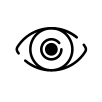Understanding the Different Eyeglass Lens Materials
At Designer Optics, we offer a wide range of different lens materials, to ensure that you have the most choices when it’s time to manufacture your prescription lenses. But if you’ve been browsing our products, and you’re not sure what the difference is between the prescription lens materials, and what is the best lenses to choose, you’re in the right place.
Let’s discuss the basics about each type of Eyeglass Lens material – and who it may be right for, so that you can make the right decision.
-
Plastic Lenses
Plastic lenses are the preferred lenses used in most prescription glasses nowadays. While glass can still be used, plastic tends to be much lighter and more durable. It’s also safer than glass, because it will not crack into small, sharp, and dangerous shards if it’s crushed or damaged.
-
Polycarbonate Lenses
Are made of a tougher, specialized polycarbonate material that’s 30% thinner than traditional plastic lenses. This makes it a better choice for you if you have a higher prescription and need lenses that are thin and durable.
-
Trivex Lenses
Trivex lenses are the strongest type of lens that we offer. These lenses were developed by PPG Industries in 2001, and are composed of a urethane-based monomer, using a cast molding process.
In plain English, this means that Trivex lenses provide fantastic optical clarity, compared to injection-molded poly-carbonate lenses. It also means that they are incredibly safe and impact-resistant, and thinner and more lightweight compared to regular plastic or glass lenses.
Trivex lenses are usually what we recommend for rimless frame designs, as the increased strength makes your glasses much more durable and provides enhanced clarity
-
High Index Lenses
We offer two different high index lenses – 1.67 and 1.74. Let’s quickly explain what “index” means.
The term “index” in optics simply refers to the ability of a certain type of material to bend and refract light. Your glasses correct (refract) light that enters your pupil to provide you with clear vision.
Simply put, the higher the index of the material used for glasses, the thinner and lighter they can be. If you have a powerful prescription, your glasses may be incredibly heavy and thick if you use a low-index glass or plastic lens.
But with a high index lens, you can correct your vision, and your glasses can remain lightweight and attractive. -
Choose The Lens Material That’s Right For You!
Hopefully, this guide has helped explain the difference between some of our most popular lens materials. If you consult with your eye doctor and consider your own personal preferences, and you’re sure to choose the material that’s right for you!























Comments (1)
Designer Optics
791 Kent Avenue Brooklyn, NY 11205
Perpetua Chilee
Do you do prescribed lenes? Can I have your price list?